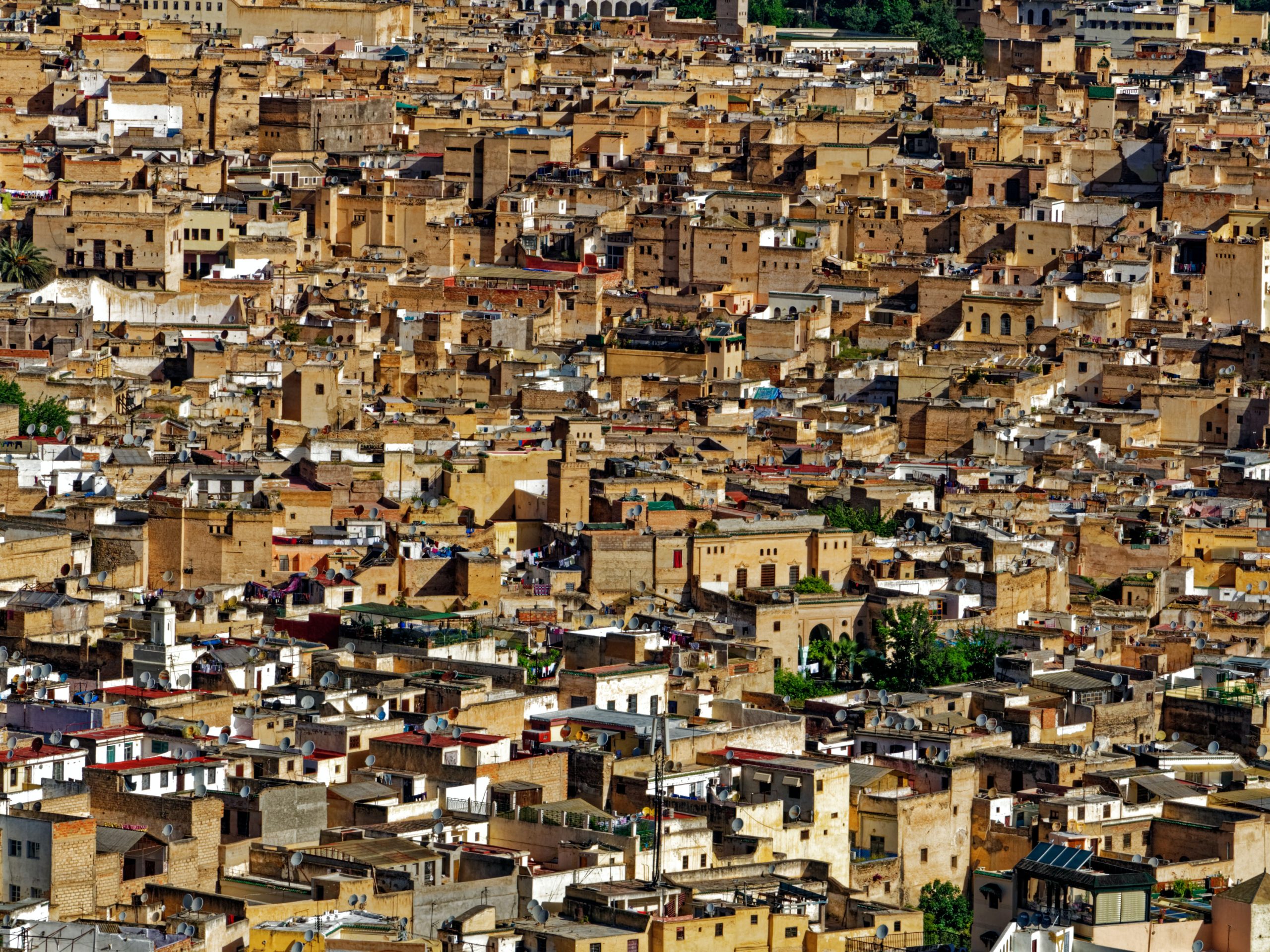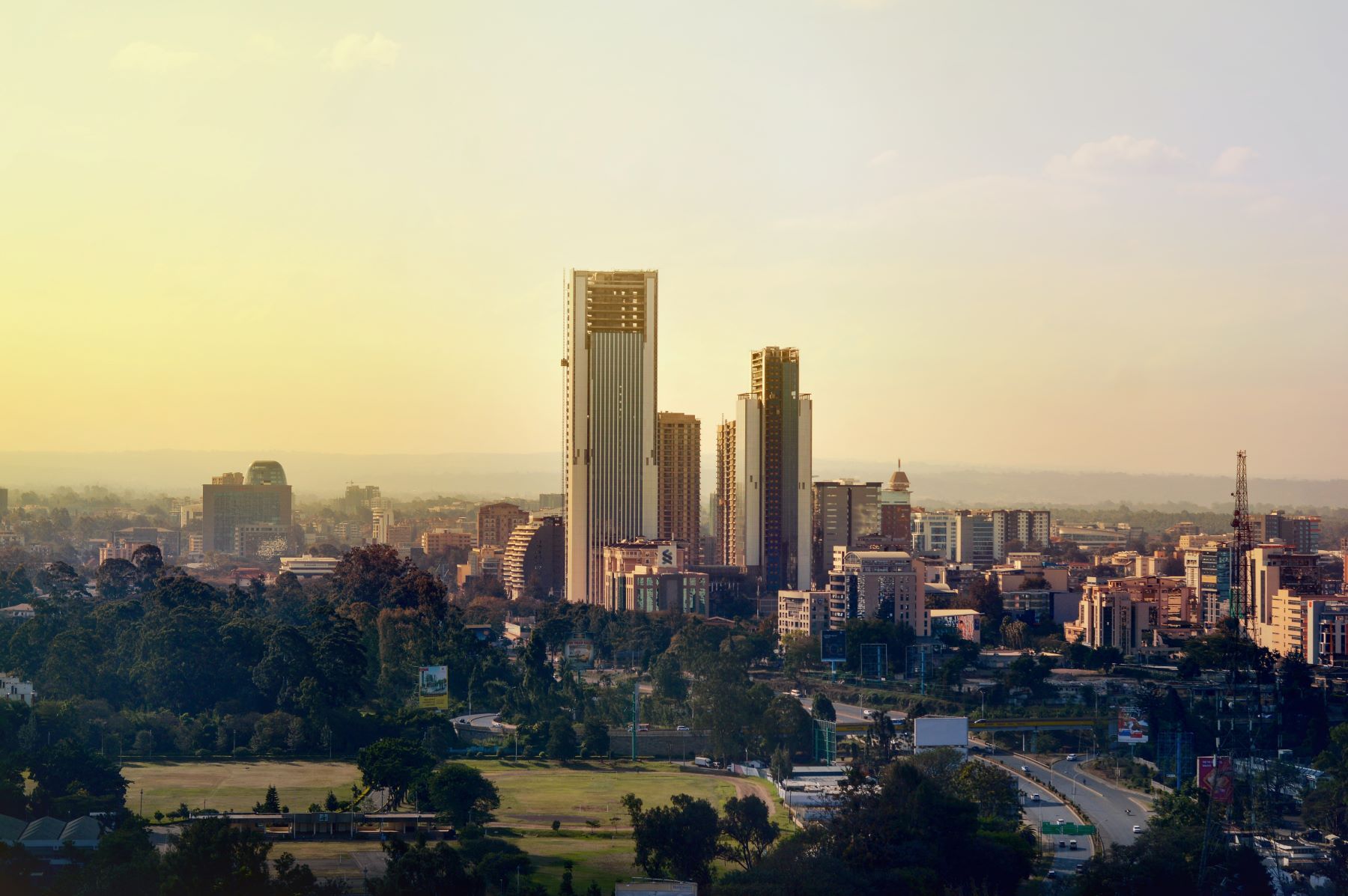What can we learn from looking at Africa through the lens of its cities?
This blog is the first in a series exploring different aspects of city development and urban change in Africa, featuring contributions from researchers and practitioners working within the African Cities Research Consortium.
Curated by David Satterthwaite, it is similar in content and structure to a blog series he oversees at IIED but with a focus on Africa. The first few articles will explore large cities in Africa – in particular the 100 largest cities that were home to 244 million people in 2020, just over two-fifths of the continent’s urban population.
This first blog looks at how the size and the spatial distribution of large cities has changed, including which cities moved up the 100 largest cities ranking between 1800 and 2020 and which fell off the list, while the second blog explores Africa’s largest cities viewed over the last 16 centuries and how many are still large cities today.
By David Satterthwaite, senior fellow in IIED’s Human Settlements research group
We know relatively little about most of Africa’s pre-colonial urban history and the role of its cities. This is something especially pronounced in sub-Saharan Africa.
Yet we can get a sense of urban history from diverse sources, including tales from travellers and explorers, material evidence of large cities, and import and export records. There are also dozens of cities with buildings and districts built centuries ago that still exist – especially mosques and medinas.
There is more written on social, economic and political issues on the continent or in countries within it, but less on what this meant on the ground for cities and their populations – and in turn, what city development meant for these issues.
Evolving city systems
Africa has a rich and varied urban history going back centuries, or more than 2,000 years for some countries and cities. Indeed, many of today’s large African cities were already well-established before colonial rule. Table 1 below lists the largest cities in Africa in 1800, including the population at that time, the year the city was founded and the rank among all cities in Africa in 2020.
It is worth highlighting that all cities for which we have the year they were founded pre-date European colonial rule. Only eight of these 34 largest cities are among 2020’s 100 largest cities, and five of these are in Northern Africa.
Additionally, while none of the African Cities Research Consortium’s 13 focus cities feature in the list of the largest cities in 1800, all are within the largest 100 for 2020. Five (Lagos, Dar es Salaam, Khartoum, Addis Ababa and Nairobi) are in the top 11 largest African cities.
The fundamental reshaping of the urban system and the location of the largest cities in all nations reflects the economic and political changes brought about by colonial rule – whereby colonial powers tended to avoid the largest cities – and post-colonial developments. City systems came to reflect more closely the government hierarchy, as the importance of state and provincial capitals grew in many nations, along with access to agricultural and mineral resources for export.
Hence, the political and economic changes imparted by colonial rule and post-colonial development created a new urban geography. Almost all the great historic cities described in the next blog still exist as cities, but with much less economic or political importance.
Africa’s largest cities in 1800 and 2020
One striking feature outlined below is how old most of Africa’s cities are. Table 1 lists the largest cities in Africa in 1800, their population at the time and the date they were founded – referring to the foundation date of a settlement that was not a city, or when an already existing city was classified as a city. Table 1 also gives the rank of these cities in 2020, allowing us to see how the 34 largest cities in 1800 fare in 2020.
Table 1: The largest cities in Africa in 1800
Table 2 shows the 34 largest African cities in 2020 – to compare with the 34-city 1800 list (in Table 1). As noted earlier, the 2020 list has few of the same cities as the 1800 list, and has far more cities founded in the late 19th and early 20th century by European powers or commercial interests. Table 2 also shows how the largest cities in Africa in 2020 rank in the 1800 list.
Table 2: The largest cities in Africa in 2020
Out of the 34 African cities that were recorded or estimated to have 20,000+ inhabitants in 1800, eight were in Mediterranean countries, although not all on the Mediterranean – much of the international trade was by overland routes, not by sea. Most of these urban centres had very long histories as prominent cities.
Of the 34 largest cities in 1800:
- The largest 18 were in Northern or Western Africa
- 11 were in Northern Africa (including four in Morocco, along with Cairo and three others in Egypt)
- 20 were in Western Africa (including 13 in Nigeria, which were mostly capitals of kingdoms – Oyo, Ife, Kano and Benin City – or caliphates, like Sokoto. All of these cities were founded before colonial rule, although some were to become important colonial administrative, transport and military centres. Two in Ghana and three in Mali had served the respective empires.)
- Two were in Eastern Africa
- None were in Southern Africa (although in 1800, Cape Town was close to exceeding 20,000 inhabitants)
- One was in Middle Africa
Of the 34 largest cities in 2020:
- Five were in Northern Africa (compared with 11 in 1800)
- 11 were in Western Africa (compared with 20 in 1800, and including five in Nigeria, compared with 13 in 1800)
- Six were in Eastern Africa (compared with two in 1800)
- Five were in Southern Africa (all in South Africa, compared with none in 1800)
- Seven were in Middle Africa (compared with one in 1800)
Figure 1 shows the countries with the highest percentages of Africa’s largest cities over the last 220 years. Given the scale and nature of economic, political and urban changes in Africa since 1800, there is perhaps a surprising extent of continuity.
Notably, Nigeria had the most cities for all years, although faced changes as some new cities became more prominent and some older cities – previously capitals of kingdoms and empires, and cities in the north, including those involved in the trans-Sahara trade, – lost importance.
Morocco and Egypt were also among those with the most cities for each year, but this has declined over 220 years.
Surprisingly, Congo PDR had none of Africa’s 100 largest cities up to 1950, and then seven of them by 2020. All seven cities were colonial foundations, with many established around mining for diamonds, gold and uranium. Consequently, it is often remarked upon as a country with vast wealth but very high levels of poverty.
Continuity and change
Of the 34 largest cities in Africa in 1800, eight were still in the 100 largest cities in Africa list in 2020, but with a lower rank, except for Cairo and Kano. Nine of the 34 cities were not in the 2020 cities list, but have more than 300,000 inhabitants today. So while cities can go up or down in the rankings, it is rare for them to lose significance altogether.
For instance, Sokoto may have fallen from the second largest city in Africa in 1800 to outside the top 100 in 2020, but it is still a substantial city with more than half a million inhabitants. Similarly, Meknes – Morocco’s capital before it moved to Rabat – fell from third to outside the top 100, but remains significant.
This is also the case for Oyo, Ife and Katsina in Nigeria. Cities that were to become Nigeria’s four largest cities in 2020 – Lagos, Ibadan, Port Harcourt and Abuja – had not even been founded in 1800. Meanwhile, many cities in Northern Africa, including Sokoto and Katsina along with those involved with the trans-Sahara trade, slipped down the rankings as using ships for trade became cheaper and quicker.
Only Cairo had no movement down the rankings, while five cities had drops of 0-50: Kumasi, El Djazaïr (Algiers), Rabat, Tunis and Abomay. Eight fell out of the top 100 cities in 2020, six of which were in Nigeria.
Urban population growth over time
In 1800, Cairo was the largest city in Africa, with 260,000 inhabitants. In 2020, Cairo remained the continent’s largest city but with more than 20 million inhabitants. The 34th largest city in 1800, Kairouan, had 20,000 inhabitants, while the 34th largest city in 2020, Brazzaville, had 2.4 million inhabitants.
Figure 2 shows not only how the average size of Africa’s largest cities changed dramatically from 1800 to 2020, but also how this average size – 2.77 million in 2020 – is relatively small in comparison to the global average of 9.5 million.
Figure 2: Average population of Africa’s largest cities (1800 to 2020)
In 2020, the collective population of Africa’s 100 largest cities was 244 million – comprising just over two-fifths of the continent’s total urban population of 588 million – with cities from 39 different African countries featured in the top 100 list.
Although cities with more than a million inhabitants existed before 1800, they were very rare and none were in Africa. But, by 2020, there were 68 of them, with Cairo becoming the first African “million city” in the 1920s. So, from being very uncommon worldwide, most African countries now have one or more “million cities”.
Follow African Cities on Twitter and sign up to our newsletter to stay up to date with our latest research and insights.
Sources: Almost all city and urban population statistics from 1950 onwards come from the UN Population Division’s 2018 World Urbanization Prospects. Almost all city population statistics prior to 1950 come from Chandler, Tertius (1987), Four Thousand Years of Urban Growth: An Historical Census, Edwin Mellen Press, Lampeter, UK, 656 pages. This blog also draws on Bairoch, Paul (1988), Cities and Economic Development: From the Dawn of History to the Present, Mansell, London, 574 pages and Freund, Bill (2007), The African City: A History, Cambridge University Press, 214 pages.
Notes: One limitation in international comparisons of city populations is that definitions of cities vary in how their boundaries are defined. A city’s population can be defined by the historic city boundaries, or boundaries based on the built-up area, or based on a political/administrative boundary, including the boundary of a much larger metropolitan area and perhaps a metropolitan planning region that is even larger. Of course, there are very large differences in city populations and rates of change, depending on which boundaries are used.
The UN Population Division makes a heroic effort to make city population figures more comparable by seeking to get figures for urban agglomerations. Their boundaries are defined as the extent of the contiguous urban area or built-up area. This definition could be applied to 55% of the 1,860 cities in the UN’s most recent World Urbanization Prospects, with the rest being on the city proper (35%) or the metropolitan area (10%).
Ultimately, the UN Population Division is dependent on data provided by UN member states and whatever definitions they use, meaning it is also hampered by the lack of censuses in many nations. Of course, for discussions of historic city populations, there were no censuses to draw on.
For Table 2 and Figures 1 and 2, the figures for 1950 onwards are UN statistics and there were more than 100 African cities. This was not the case for 1800, 1850 and 1900, so all cities with populations estimated to be at least 20,000 inhabitants were included.
Figure 2 overstates the average population of cities in 1950, 2000 and 2020, as it is the average size of cities that had reached 300,000 inhabitants by 2018. Many cities are smaller than this and if included would bring down average populations.
Note: This article presents the views of the author featured and does not necessarily represent the views of the African Cities Research Consortium as a whole.
The African Cities blog is licensed under Creative Commons Attribution-NonCommercial-NoDerivatives 4.0 International (CC BY-NC-ND 4.0), which means you are welcome to repost this content as long as you provide full credit and a link to this original post.




